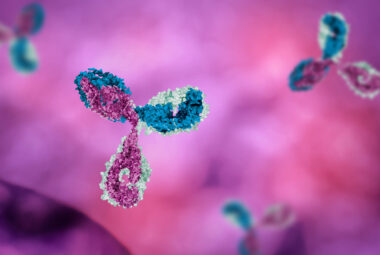
UPC tweaks EPO inventive step approach as Sanofi succeeds against Amgen
Abstract
Shortly after celebrating its one-year anniversary, things look to be very much in full swing for the Unitary Patent Court (UPC), which on 16th July 2024 issued a judgement on the merits of a widely litigated patent protecting Amgen’s anti-cholesterol Repatha® medication. Revoking the patent in its entirety, the judgement (CFI_1/2023) is noteworthy in that it confirms the UPC’s emerging predilection for an EPO-style assessment of inventive step, albeit with a slightly different flavour to prior art assessment and claim interpretation. In a string of firsts, this is a decision on the very first revocation action ever to be lodged with the Court, it contains the first patent revocation order issued by the UPC, and is the first substantive UPC decision relating to pharmaceuticals.
Background
The dispute revolves around antibody-based medications that lower the levels of low-density cholesterol (LDL) in the blood. These injectable medications are prescribed as treatments for hypercholesterolaemia and atherosclerotic cardiovascular disease among other heart conditions. The Claimant markets Praluent® (alirocumab) while the Defendant and proprietor of the Patent markets Repatha® (evolocumab). Both antibodies work by inhibiting a protein called PCSK9, which normally prevents LDL from being scavenged away from the blood circulation.
On the very day the UPC opened its doors, Sanofi filed a claim of invalidity of the Patent, and demanded its revocation before the Munich Section of the UPC’s Central Division. Minutes later, the Defendant separately brought an infringement action before the Munich Local Division claiming that Sanofi and its collaborator Regeneron infringed the Patent by selling Praluent®, to which Regeneron responded by counterclaiming for revocation of the Patent. For procedural convenience, the Munich Local division referred the counterclaim to the Munich Central Division, which combined it with Sanofi’s original revocation claim.
Amgen’s European Patent EP3666797 (“the Patent”), granted in 2023, was valid in 17 countries throughout Europe. The main claim of the Patent is a functional antibody claim, which defines the antibody indirectly, by defining the target it binds (a specific region of the PCSK9 protein) rather than by providing any details of the structure of the antibody itself.
Claim interpretation
After a short introduction outlining the legal history of the case and relevant science, the 53-page judgment provides a detailed look at claim interpretation and patent validity. The relevant legal framework here, as identified by the Division, is that of the main UPC Court of Appeal decision to have grappled with similar issues so far, an interim injunction order in the NanoString v 10x Genomics saga. Article 69 EPC and its Protocol of Interpretation are the legal basis according to which claims are to be interpreted: therefore, the claims are not simply a starting point, but the “decisive basis” for determining the scope of protection afforded by a patent. However, the Division continues, “the description and the drawings must always be used as explanatory aids for the interpretation of the patent claim and not only to resolve any ambiguities in the patent claim”. Therefore the description may even “represent a patent’s own lexicon” for the purposes of claim interpretation. It is interesting to see the Division take this approach as the de facto standard at the UPC, only days apart from the announcement of the referral, to the EPO Enlarged Board of Appeal, of the question of whether the description can always be consulted to define the meaning of the claims, or only in cases of perceived ambiguity. It remains to be seen whether the EPO decides to follow the UPC’s suit, or whether it takes a more restrictive line.
Citing another UPC appeal decision, SES-imagotag v Hanshow, the judgement at hand also underscores that each feature of a claim must be interpreted in light of the claim as a whole. For this reason, even though the Patent does not mention any connection between distinct functional features in its main claim, the Division held that the person skilled in the art would understand that such features are intrinsically linked: the claim is to be interpreted as directed to an antibody that binds PCSK9 to prevent the PCSK9-LDLR interaction. Interestingly, this judgement makes no mention of whether the prosecution history should, or even may, be consulted for the purposes of claim interpretation, a question which was also avoided in the SES-imagotag v Hanshow judgement.
Based on this framework, the Division ruled that the definition of the antibody of claim 1, which binds to a specific domain of PCSK9, is clear and commensurate with what could be understood from the description and drawings of the application, even though the claims make no direct reference to these. The Division also adopted the EPO Enlarged Board of Appeal G 2/98 decision as the guiding principle in deciding whether priority was successfully claimed by Amgen, which ultimately undermined Sanofi’s attempted lack of novelty and invalid priority claim attacks. After this initial save, however, Amgen’s luck seemed to run short.
Inventive step
The bulk of the decision is directed to an inventive step analysis. On the face of it, again the Division seemed to set its course squarely within EPO practice and legislation, as it relied on the problem-solution approach, according to which an inventive step can only be recognised if, for a given technical problem, the patent offers a technical solution that appears non-obvious to a person skilled in the art having regard to the state of the art at the priority date. However, the Central Division appears to have taken a slight detour from the EPO-trodden path: while the EPO would routinely identify the prior art that was closest to the patent at the priority date and assess inventive step on the basis of any differences between it and the patent, the UPC Central Division held that any prior art document that tackles a “similar underlying problem” to the patent is suitable as a “realistic starting point” for analysing inventive step. The fact that, as argued by the Defendant, their proposed document would have been a closer piece of prior art is immaterial, because the Court’s document is a realistic starting point nonetheless.
Much like for EPO practice, it was held relevant not whether a skilled person merely could take the next step, but rather whether they would do so. The Court decided on the evidence that the prior art already suggested the circulating PCSK9 protein would be a sensible therapeutic target, and further, that the next step of generating blocking antibodies directed towards it would be a sensible therapeutic approach. Again basing its assessment wholesale on EPO practice, the Central Division also decided that generating antibodies against known targets such as PCSK9 is an entirely routine exercise, however tedious and expensive it may practically be.
Amgen tried to argue that, based on the prior art, there would not have been a reasonable chance of success in generating the claimed antibodies, but the Court rejected their arguments. There was therefore no need for the Central Division to answer the hypothetical question of whether, in such cases (i.e. when the prior art suggests a certain next step that is simply routine experimentation), a low or even absent reasonable expectation of success at the outset might make the next step non-obvious. It will be interesting to see how the UPC case law develops on this front.
The final nail in Amgen’s coffin was hammered in when the Central Division held that it was not necessary for the skilled person to “inevitably” arrive at the same result each time they tried to isolate an antibody: as long as it was possible to generate an antibody that would fall within the Patent’s claim in a routine, non-inventive way, then the Patent ought to be invalid. This was held to be the case, among other reasons, because the Patent’s claims do not require the antibody to solely bind a specific region within PCSK9, as long as they touch upon it even minorly.
All claims were found to be invalid for lack of inventive step, and the patent was therefore revoked in all 17 countries. An appeal of this first instance decision from Amgen, however, is very likely. The original infringement action is still pending before the Munich UPC Local Division, and the UPC will consider whether to stay these proceedings later this year.
Conclusions
- Words in a claim are not to be interpreted simply according to their literal or dictionary definition, but always in view of the patent description and drawings, which may provide definitions that contrast those in the prior art. Each claim feature is to be interpreted as part of the claim as a whole. It remains open whether prosecution history may play a role in claim interpretation.
- Inventive step is to be assessed mostly following the EPO’s problem-solution and could-would approaches, but the claimed subject matter has to be inventive over any realistic starting point, not merely the closest prior art. It remains open whether lack of a reasonable expectation of success may be relevant to establishing an inventive step.
- As the same parties have also opposed the Patent before the EPO, and those proceedings are still pending, it will be interesting to see whether the EPO will reach the same conclusions. The entire UPC judgment has been submitted in those proceedings.
- Similar legal actions between the same parties have also been taking place in the USA, directed at the US-corresponding version of Amgen’s patent. A later article will examine the parallels between these cases.
If you have any questions about the UPC, or contentious matters at the EPO or in the UK, please do not hesitate to contact the author or your usual Barker Brettell patent attorney.



